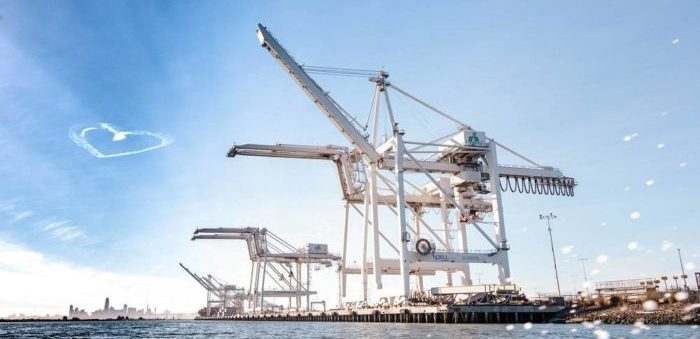The Port of Oakland announced that it surpassed all its original goals set in the Maritime Air Quality Improvement Program (MAQIP).
Namely, the Port successfully reduced diesel particulate matter emissions (DPM) by 86% over 2005 levels. The goal was an 85% drop in DPM. Nitrous oxide (NOx) emissions were cut by 40% and sulfur oxides were slashed by 95%. All these reductions were beyond the original goals.
This huge reduction in harmful emissions is a tremendous achievement. The Port, its partners and the community worked together for more than a decade to improve air quality and support public health through major investments, innovation and commitment
said Port Director of Environmental Programs and Planning Richard Sinkoff.
MAQIP was the Port’s comprehensive Master Plan to reduce harmful emissions from maritime operations at the Oakland Seaport, setting 2005 activity as the baseline for comparison and 2020 the final year for reaching the goals.
The 2020 Seaport Air Emissions Inventory included six categories of mobile sources: ocean-going vessels, harbor craft such as tugboats, cargo-handling equipment, on-road trucks, locomotives and other off-road equipment, such as construction equipment.
The Port exceeded all emissions reduction goals set in 2008 in the Port’s Maritime Air Quality Policy Statement. Reductions for harmful emissions were achieved despite an increase in cargo volume
added Port Environmental Planner/Scientist Tracy Fidell.
What is more, container throughput at the Oakland Seaport was almost 8% higher in 2020 than in 2005. Port officials recognized the Bay Area Air Quality Management District, West Oakland Environmental Indicators Project, California Air Resources Board, trucking companies, marine terminal, rail, and tugboat operators, ocean carriers and the local community for all coming together and working diligently to fulfill the commitments outlined in MAQIP.

































































